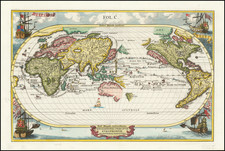Search
The outlines of Australia and many toponyms are thanks to the many voyages that charted Australia. The most prominent of these were those of Nicolas Baudin and Matthew Flinders at the turn of the nineteenth century.
When Nicolas Baudin left Le Havre in the Geographe in October 1800, he was embarking on a voyage meant to survey the shores of Australia. He was accompanied by the Naturaliste, commanded by Captain Jacques Felix Emmanuel Hamelin, whose crew included the young naval officer Louis Freycinet. At this time, the British had established their presence in eastern Australia, but the western and southern portions of the continent remained unexplored and not necessarily claimed by the British. In other words, although ostensibly a scientific expedition, the French were also open to possible overseas expansion if the opportunity arose.
Initially the ships, sometimes separated, made their way north up the western coast of Australia from Cape Leeuwin to Timor. They then went south again, but were separated a second time. Baudin and the Geographe made for Van Diemen’s Land and then returned toward the west.
En route, they encountered British naval officer Matthew Flinders in the Investigator. Flinders had initially begun his charting of Australia in the southeast in the mid-1790s, where he surveyed and named the Bass Strait. By the time he met Baudin, Flinders was on his third Australian surveying mission. He was heading to Sydney, from where he would begin a clockwise circumnavigation of the Australian continent, the first such voyage to ever do so.
Baudin and Hamelin were reunited in Sydney, where both ships had come to recuperate in late 1801. During the course of 1802, the Geographe and the Casuarina, a survey vessel purchased by Baudin and commanded by Freycinet, surveyed the southern coast of Australia (the Naturaliste had been sent back to France). They then sailed round the west coast to Timor, then back to Mauritius, where Baudin died. It was also where the Casuarina’s career ended, as the ship was abandoned in favor of consolidating the crews on the Geographe. The ship returned home on March 25, 1804.
Flinders was not so lucky. On his homeward voyage to Britain in late 1803, Flinders was forced to stop in French-controlled Mauritius due to the poor condition of his ship. As Britain and France were then at war, the governor of the island arrested Flinders, detaining him (in relative comfort) for seven years (1803-1810).
Flinders worked on his charts of Australia while in Mauritius, but he was unable to publish them in full. Instead, the first map of the continent was by Freycinet. It appeared in an atlas of the Baudin expedition, released in 1811.

